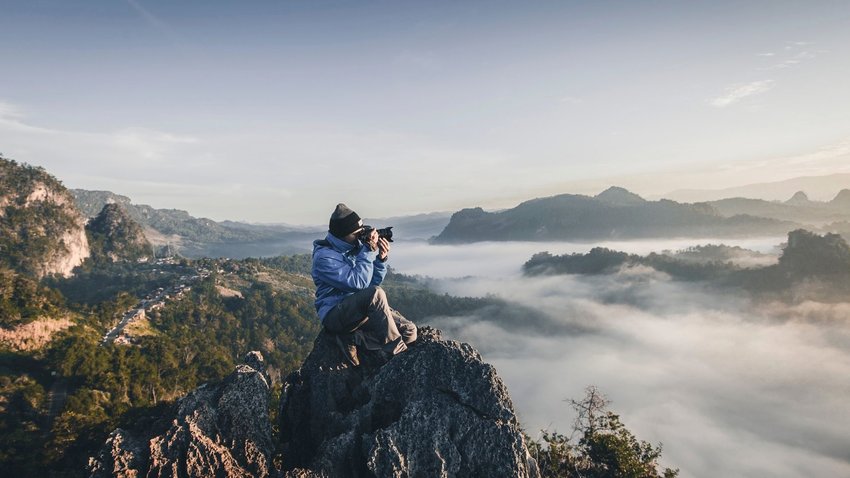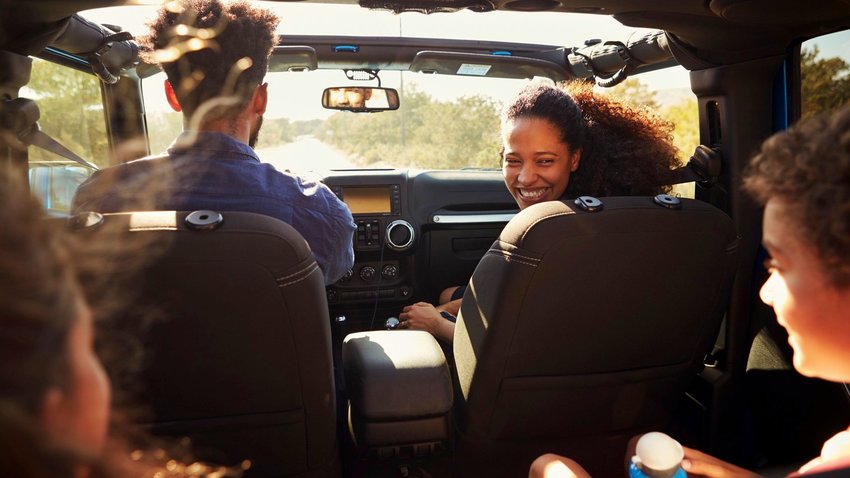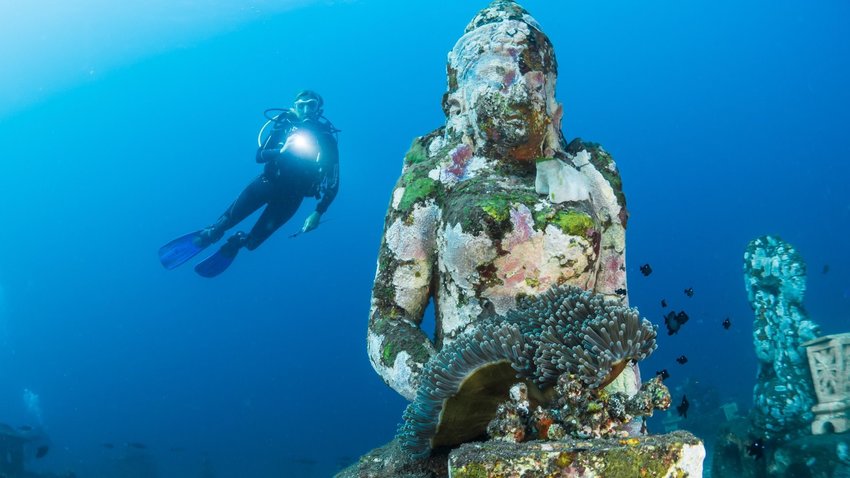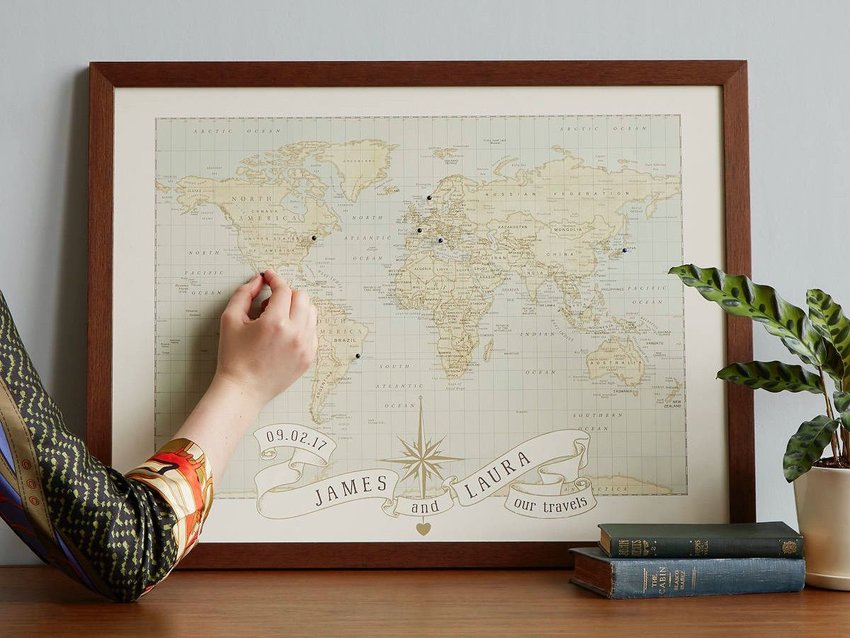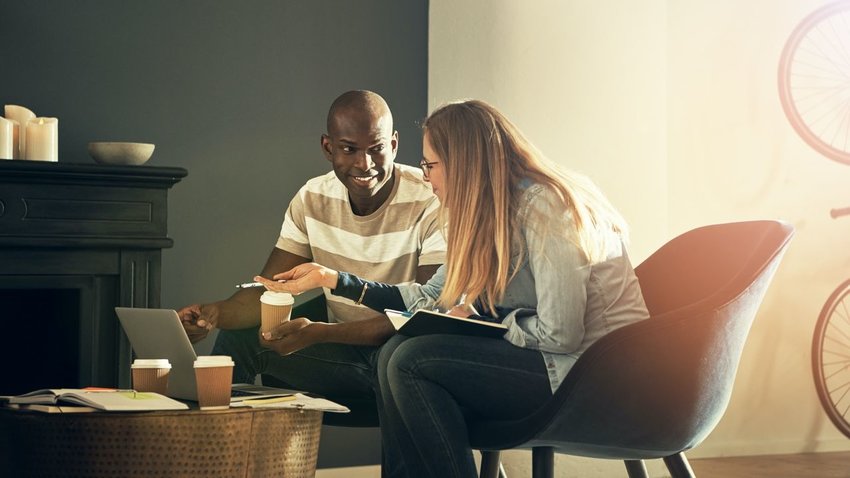Sam Elkins is a professional photographer based in Los Angeles whose photography has taken him around the world. He just launched a new video course in partnership with Moment to help budding photographers improve their editing skills, and he was kind enough to sit down for a brief interview with The Discoverer.
We talked about Sam’s favorite destinations, his best tips for getting better shots, and the photography gear he takes with him every time he hits the road. The interview has been lightly edited for clarity.
Want to take the course? You can currently get it (or any Moment photography courses) for 25% off with promo code summerschool25. Or, buy access to two classes (like Sam’s iPhone photography class), and use promo code summerschool30 to save 30%.
Shep McAllister: When you speak to people who are just getting started or just getting serious about photography or photo editing, what are some of the most common beginner mistakes that you see?
Sam Elkins: I think people would tend to look at a program like Lightroom, for example, and I think they try to understand the entirety of it when, in reality, you only really need to understand a couple small components of it to do 90% of it. That’s more than enough for most people. I think people focus on that too much and they get kind of overwhelmed because it takes a lot to learn these programs in and out. But I don't necessarily think you need to know it 100% in order to get even pretty good at it. Especially because I think the Lightroom suite is so good because you have it on your phone as well. So if you just really want to edit some iPhone photos it's a free app and you don't need to have an Adobe subscription, all the way up to Lightroom and Photoshop, which are much more professional. And I think a lot of times people don't even know that stuff like Lightroom Mobile exists. It's nice and simple. It's easy to use but it also still has some of that pro features that a lot of people are looking for. So I'd say from a beginner perspective, definitely people tend to get overwhelmed from what I've seen. It's a lot to take in at first if you've never really experienced a program light Lightroom or Photoshop before.
On Culling Your Shots
SM: So these days, whether people are shooting on their phones or shooting with more professional equipment, we have effectively unlimited storage space. I think it’s fair to say we’re taking more photos than ever. And you have a whole section of the lesson that's dedicated to culling your shots and finding the best ones to really focus on. What are some tips you would give to people who want to fight against that instinct to just take as many shots as they can?
SE: Yeah. I think you definitely hit a key point. Especially on our phones and stuff, we have virtually unlimited storage nowadays with backing up online and everything. The possibilities are endless. But I would say, the more photos that you take in the moment, the more headache you'll have at the end if you don't enjoy doing that kind of stuff. Even I do photography for a living and it's not exactly my favorite thing to do. But I think when you're culling specifically you just need to look for certain attributes that add value to whatever kind of story you're trying to tell.
So for example, I actually just culled a shoot here right before I called you guys. I'm looking for specific shots of this car I was shooting and what looks good. Nice lighting. Obviously focus is pretty important. If you stick to simple stuff like that and then you work your way up to compositional stuff like what does the background look like? Is the background in focus? Is the subject in focus? Stuff like that really helps when you start to narrow down hundreds and hundreds of photos or even thousands down to a really manageable chunk.
Something I go over in the lesson is I actually cull all my photos before I import them into Lightroom because it saves me a lot of time. Lightroom tends to be bogged down when you have a bunch of really big files, especially if you're shooting on a camera or anything like that. I think it just allows you to really make your decisions. At least which photos you're going to edit beforehand. I use a program called Photo Mechanic. But culling is essentially just narrowing down stuff. So you can really use anything for that.
I'm a big believer in just trying to get as many photos as you can off the plate so then you really just have your favorite images. I kind of go by this saying, even if I like an image a little bit, I'm going to keep it because I'm going to delete the rest of them. So I don't want to have any indication that I might want a photo down the road or anything like that. I think that really helps me narrow stuff down. And then once I finally import into Lightroom I can still cull a little bit but it's much more manageable versus having 700 or 800 photos in Lightroom. I just don't really enjoy the interface as much as something like Photo Mechanic or even if you're just shooting photos on your phone. It's much easier to interact if you just tap on the screen and pick which photos you enjoy, favorite them, stuff like that.
Sam's Favorite Gear For Traveling
SM: So say I'm packing for a vacation that's mostly meant to be relaxing, but while I'm there I also want to take some good photos but without necessarily checking a Pelican case full of expensive gear. What are some space-efficient cameras or accessories that I should consider investing in?
SE: Okay. I would say definitely look into Fuji's lineup. They make some great really small cameras. The X100 series is I think one of their more beloved camera series. I think I would definitely recommend something like that if you're looking for a really small, compact camera. It's not going to be full-frame, but honestly I think people would get hung up on that too much. Especially if you're just shooting travel photos or photos of your family, your friends, stuff like that, you can get by with a much smaller camera.
Take it from me, my back is perpetually aching because of how much gear I always have to carry. So I think if you keep it really small, you have one camera and it doesn't even have an interchangeable lens on it. I think something like that is really beneficial. What I like about the Fuji X100 series is they have pro features in terms of you can change your aperture, you can change your shutter speed, you can change the ISO, but you can also put it all in auto mode and then just run and gun like that. So I think something like that is really beneficial because you can really dial-in your settings if you want but most of the time you probably just want to have it all on auto mode. That's totally fine too.
And with that the cool thing about that camera is you can bring a portable battery. You don't need to charge batteries. You can just plug it into your battery bank. Some of the older cameras like the DSLRs and stuff you can't do that, obviously. So I think that's something that's really valuable and that comes with new features.
If you want something a little bit bigger, Fuji doesn't make full-frame cameras but even their bigger APSC lineup, like the XT series, is really great as well. I use their big medium-format camera for my big workhorse camera. I've used all of their different cameras and I think, in terms of bang for your buck and also just ease of use while you travel, their stuff is by far the best.
But I would also say it's really important to have redundancy even if you're just going on a family trip. You think about SD cards. Even if you can charge your camera with a portable battery, you might want to have a couple batteries on hand. Stuff like that I always have two of everything, basically, just to make sure. The worst thing you get to a location and you forget an SD card or your SD card's full and you can't take photos anymore.
But I also definitely utilize mobile technology, like phones, iPads, tablets are really beneficial, especially if you're traveling with that small of a camera. Something like that all the way up to the Leica Q Series are pretty nice as well. Anything in that small form factor, it works really well with an iPad because you can just simply plug in with an SD card reader and all of a sudden now you've got all your photos on there. I tend to recommend that a lot to people who just want to have cool travel photos and stuff because you can back up now to SSD over your iPad which is pretty cool.
Something like that where it's really small and not obtrusive, I would definitely recommend. Half the time if I'm not traveling somewhere for work I tend to keep my kit pretty small. Just enough to enjoy what I want to be doing but nothing too crazy. I'm not bringing five lenses and tons of batteries, filters, all that stuff. You can keep stuff pretty minimal and I think that's what's so cool about modern day technology. Especially right now, all these cameras that are coming out are all good. Every single camera is very good. It's more just about personal preference and the little features that some may have over one another.
SM: So when you're packing for a shoot that you have to travel for, what are you using to keep all your gear safe and keep it protected on the plane or however you're moving around?
SE: Yeah, I would definitely recommend Peak Design or Pelican products. Pelican more for I guess people who actually probably work as a creative for a living. But Peak Design's great for just anybody and everybody. I think what's really cool is they make stuff that's very available and unique for everyone. I use it as a professional photographer. I can see my parents using it. I could see my girlfriend using it. They make stuff that's just really reliable and it works. Their backpacks are amazing. Their slings are great. I want to say it's founded by photographers or some sort of creatives. So I think that's probably why they make a lot of these design choices that just make a lot of sense.
I think it's just important to make sure that your gear is separated wherever you're packing it. If you have more than one camera, more than one lens, you want to make sure that stuff isn't banging up against each other. Because if you're on an airplane or you're in a car, you're usually just throwing stuff in and out and you want to make sure that stuff is nice and padded. I think Peak Design does a pretty good job of that, but I'd say Pelican does the best job. I have a couple different Pelican cases. One for my video gear. One for my photography gear. I can bring both or one and it's nice and very heavy, very robust. I've taken it all around the world and those things just never break. I've had one of them or at least five years. There's no problems at all.
On Impromptu Photography
SM: Say you don't have your equipment with you, you're sort of caught off guard and you want to shoot something and all you have is your phone or maybe a really small camera, how does that sort of change your approach to shooting in the moment?
SE: I actually prefer that for shooting in the moment, to be honest, I prefer a small camera. I don't really shoot on my phone a ton. Obviously, I know how to do it and most people know how to do it. But I think I prefer having a dedicated camera, even if it's really small.
When shooting stuff in the moment, I think having something like that is really nice because it's really easy to take out and just sling over your shoulder or have in your pocket. I mean that's really the big benefit to something like that because it does allow you to capture stuff in the moment much more quickly. You flip the switch on and it's on in like half a second. It's really quick and easy.
I would say autofocus is obviously something that's really beneficial. You're not going to get that with something like a Leica because all their lenses are manual focus. But something like the Fuji X100 series has a really, really reliable autofocus and it's really accurate. It has eye auto detection, which is really, really nice. A lot of new cameras have that nowadays. Anything with autofocus is going be really helpful for those kinds of quick captures.
It definitely does benefit to have your settings all ready, if you're using anything manual in terms of shutter speed, ISO, white balance, all that stuff. I usually like to set that as I'm heading out for the day. If I can just set it for the most part, at least get the white balance right, figure out if I'm going to be shooting JPEG or RAW, most preferably RAW, but then you also get the white balance set. Obviously you can fix that in post, but I'm a big believer in--and this is kind of something that I teach a lot in my lesson--just understanding how to get the best possible image in the back of your camera first. Because I think a lot of people they tend to rely on editing too much. When you rely on editing too much you can really take away from the image if you're just overdoing it. I tend to keep things super simple.
Just have a camera with some nice autofocus. Even the really small cameras nowadays have great autofocus. Have your settings ready to go and keep it nearby. Keep in on a strap. Keep it in your pocket. I think something like that works really well.
On The Importance of Editing
SM: So your course really focuses a lot on the idea of consistency in creating a distinct and repeatable look for all the photos you're working on. Explain to someone who's sort of new to editing why you think that's so important.
SE: Yeah. Well speaking from a professional perspective, I think it's really valuable because from somebody who might want to hire me for photography purposes, people like to see that you can have a clean, repeatable style over many different shoots, many different years of work even. And the cool thing is I think a lot of the values, like the philosophies that I go about and stuff that I teach in this lesson as well, is it allows you to even go back to old work. And the cool thing about digital files is, they can be re-edited. Something you took five years ago, if you apply something that you've learned just recently it's probably going to look fairly similar to stuff that you've taken now. Maybe not compositionally, but in terms of color and contrast and all that fun stuff. It's going to look pretty similar if you know what you're doing.
But I would also say even on a nonprofessional level, it's just nice to have... You want to look back 10 years from now and have all these family photos or photos of your loved ones, travel photos. It's nice that they all look similar and a lot of that comes in the edit. And a lot of it also comes while you're out and about and understanding the settings and making sure that just little tweaks, like white balance and stuff like that, it goes a long way. It just saves so much time. You don't have to do nearly as much when you get back.
But yeah, I definitely think that even professional or not it's just a great thing to live by and to try to keep your images as similar as possible. And just because you'll get to a point... Some of my favorite photographers they have this look to their photos that I know it's their photo even before I see that their name's attached to it because you create this kind of subconscious look to your photos. When people see it, it automatically registers in their mind. They're like, Oh, this is so and so's photo. This looks great. And I think that's where you see the real benefit to something like that.
SM: So a photo that someone takes of their family or their friends or from a vacation they took, obviously looking at that photo months or years later it can bring back memories of that time or sort of bring you back to that place.
SE: Yup.
SM: And a big part of your course focuses on how a lot of people like to just batch edit and go through a lot of photos really quickly, and you're more about taking a painstaking individual approach to each photo. Do you find when you're doing that with some of those more sentimental photos that you take yourself, do you find that that process sort of deepens your connection? Sort of hardens those synapses in your memory about that time and place that you took it?
SE: That's definitely possible. Yeah, I would say I definitely focus on that in terms of an individual image approach, but also I think it's just really important to kind of take it on a shoot-by-shoot or trip-by-trip basis essentially. If you can nail down a look that you really enjoy that's within the realm of what you would typically do, and then you start working through the entire catalog and then all of a sudden you can just start copying and pasting batch edits for sure. But I think mainly what I focus on is trying to figure out how consistent of a style you can get while also being unique to each shoot and location. You want to be shooting the same stuff over and over and over again, but you also want to have a fairly similar look to all of it.
But then I would also say, to answer your question, I think it definitely does deepen the connection, especially with just photos of my family for example. I get to go home and see my family, my parents, my sister. I think for me that definitely... I love looking at the photos over time. And if I'm re-editing them or something like that, I think it definitely does deepens the relationship I have with the photo. And even just old work. There's just so much nostalgia tied to photography, especially the more personal the photo is the more nostalgia you're going to have. If you look at something from several years ago, you're going to be able to really connect with it. And if you're going to be coming across it in a Lightroom catalog, you might want to re-edit it and then you might be able to relive that moment again, for sure.
On Printing Your Favorite Shots
SM: I think for most of us the vast majority of the photos we take they'll only ever exist in digital form either on social media or just sort of on the memory of our devices. Do you have any particular ways that you like to bring some of your favorite photos into real life, whether it's favorite materials or methods for prints or other unique ways that you memorialize some of your favorite shots that you've taken?
SE: Yeah, I would definitely say I have some artwork hanging around my office and my house for sure that's just some of my absolute favorite photos. And I like to update those regularly. To someone who's never printed a photo they love before, it's an amazing feeling because you can look at the screen all day long but it's a screen. You can look at whatever you want on there, it's not going to be nearly the same as seeing something in print.
I would encourage people to especially just pick their favorite photos. Figure out what you really enjoy and just try to print it. It's not expensive. I typically print from this place called Richard's Photo Lab in Los Angeles. Their stuff is just beautiful. They print on the ritzy paper, just really pretty. A really nice texture to it. And especially if you are a photographer or you really enjoy photography, definitely experiment with different papers and different stocks because I think it's really going to change not necessarily the look, but when you feel it it's definitely different. Some of them are much more coarse. Some of them are way more fine, silky. Matte versus glossy as well is kind of a typical thing that people look at. But yeah, definitely, the more that you dig deeper into it there's a lot that you can really do. It just depends on what you're looking for.
The nice thing is printing typically isn't super expensive anymore. Like I said, it's pretty reasonable. So you can try printing a photo on multiple different kinds of stocks and papers and experimenting with different color choices and see what happens.
SM: Who are some photographers right now whose work you really admire?
SE: Great question. I would say my buddy, Jared Chambers. He actually lives here in LA. A great photographer. A good friend of mine. I always just bounce ideas off of him. It's great to be able to talk with him. I'd say it's a common theme with some of my favorite photographers right now. They're really just people I look up to. And a lot of them I have personal relationships with which is pretty cool. Another one is Justin Chung. He's a photographer here in LA as well. He shoots a lot of film, actually, and he prints his work a lot. He's definitely encouraged me to print more often and experiment with that. He's made several books which is pretty cool. I've done something like that and that's something I would definitely like to continue to do in the future.
Yeah. Those two, definitely. And then, it just kind of varies honestly. Anybody in my opinion who's just working really hard to be a better photographer, never stop learning, and are really humble. I'm usually pretty inspired by anybody who resembles any sort of being humble and just being excited about what they do and never really feeling like they've “made it” per se, because that's something that I've always tried to embody. I'm always just learning. I've never made it in my mind and I don't really think I'll ever make it because that's the fun of it for me. I think a lot of the people that I look up to here definitely embody that as well.
On His Favorite Places to Travel
SM: So to sort of put a bow on this, you've obviously been all over the world for your work. What are some of the favorite places you've visited? Where are you excited to visit once it's easier to travel again?
SE: I would say New Zealand is probably my favorite place I've been. I've been there three times just over the years. It's just so pretty. People who haven't been there before, it's just very unique and really rugged, which you probably wouldn't really expect. It's just like a random island. It's very small compared to all of the other mountains and mountain ranges, but it's just so pretty because you're driving along at sea level and then the mountains appear so big. It’s a really beautiful contrast with this rain forest sort of landscape as you head down towards the South. The south of New Zealand is probably the most beautiful. Queenstown. Milford Sound. That whole area is just really, really beautiful. I'll definitely say though, parts of Italy as well are just stunning, like Lake Como, the Amalfi coast, the Dolomite region. Really, really, really pretty. All of that area, like Germany, Switzerland, Italy. Just really, really beautiful.
I would also say one of my favorite places I've ever been to is Ethiopia in Africa. A really unique place. I was actually there just working with a nonprofit and the people were amazing, just so nice and hospitable. Not necessarily like sheer beauty in terms of nature like New Zealand is, but more culturally. It's just really pretty and very welcoming, which I think probably a lot of people wouldn't expect. It's a pretty random place to go, but I'm very fortunate that I was able to go. So if anybody ever finds themselves there, it's a great place to go check out. But yeah, I would say honestly, just feeling comfortable to go on road trips again would be nice.
The best part of LA is it's so central. I can go up to Big Sur in four hours. I can go to Yosemite. I can go over to the desert. There's just lots of options. I think once it's okay to do that--it's already kind of, sort of becoming okay--but once it's somewhat back to normal in that you can go outside, you can camp, it's not a super big deal [to do that from LA]. Definitely, I enjoy road trips. My parents live in Washington up in Seattle, so we go up there quite a bit and the drive up there is really pretty. But yeah, I think lots of road trips probably for now. And then once I can travel again I'm down to go anywhere, honestly. I think I'll probably be excited to go anywhere once this is all done.
Photo by Alif Ngoylung

